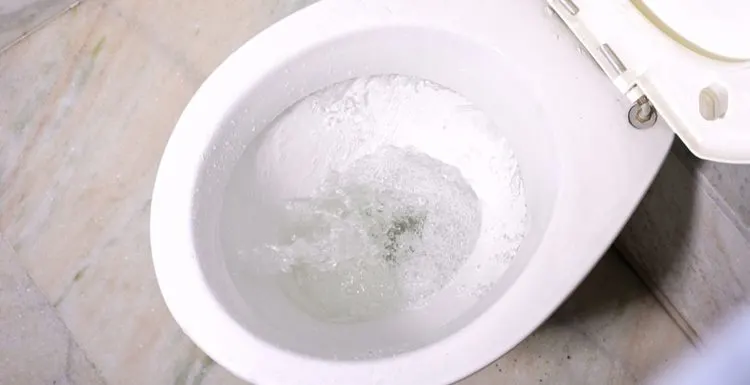If your toilet keeps running, you’re wasting time, money, and energy thinking about and trying to fix it.
Instead of getting upset, try these simple troubleshooting tips. Read on to learn all you need to know.
If your toilet keeps running, you have two options. While you can attempt to fix the problem yourself, calling a professional will likely result in a quicker, longer-lasting solution.
Issues with equipment in your toilet tank can cause continuous running, and we’ll discuss some of those issues, along with potential solutions, below.
We partnered with Networx to help you find local plumbers in your area. Click to below to get a FREE quote.
5 Simple Reasons Your Toilet Keeps Running
Running toilets are an annoyance that almost everyone will deal with at some point. Your toilet could be continuously running for any of the following reasons (or a combination of these):
- You have a leaky flapper, the rubber seal that initiates toilet flushing when activated by the handle on the tank exterior.
- The float in your toilet may be raised too high, causing the pump to continuously run.
- The float in your toilet is raised too high, and the pump is continuously running, letting water in the tank leak into the overflow tube.
While each of these problems is annoying, they are generally easy to fix. But, it’s important to fix the problem as soon as possible to prevent unnecessary water waste and an increased water bill.
According to the EPA, leaks can result in 1 trillion gallons of water waste per year in the United States. When you fix your running toilet, you can contribute to natural resource conservation and reduce your utility costs.
Fixing a Toilet That Keeps Running
If your toilet keeps running, a variety of issues could be to blame.
Luckily, there are a few solutions accessible to an amateur plumber. But, if the steps below are a bust, you’ll need to consult a professional as soon as possible.
Step 1: Turn Off the Water Supply
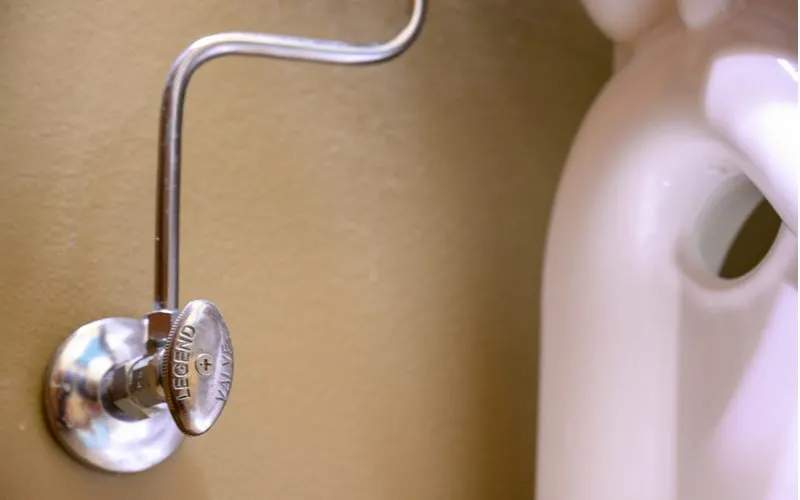
Lost_in_the_Midwest/Shutterstock
Your toilet will connect to the wall behind it via a plastic or metal tube with a chrome-plated handle. Turn the handle to the right to turn off the water supply to the toilet, and flush the toilet to empty the tank.
It’s integral to turn off the water supply to the toilet while you’re working on the tank components.
Emptying the tank of water ensures that you’ll be able to test the effectiveness of all of the tank parts and prevent splashing while you have your hands in the tank.
Step 2: Check the Flush Chain
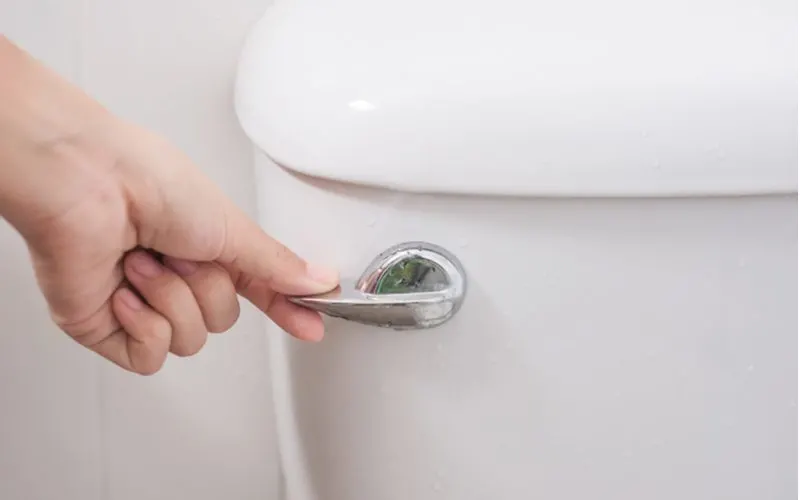
Jo Panuwat D/Shutterstock
Check that the chain connecting the flusher to the flapper is the correct length. If the chain is too short, the flapper can’t seal properly in the bottom of the tank, causing tank water to leak into the bowl (resulting in continuous running).
While you may have enough chain links to make an adjustment, you may need to buy a new chain to achieve a proper flapper activation.
If the chain is too long, the flapper may not open as wide as it can, causing a weak flush.
While this fix isn’t a solution if your toilet keeps running, it will improve the overall performance of your toilet. The stronger your flush, the better!
Step 3: Check the Flapper and the Valve Seat
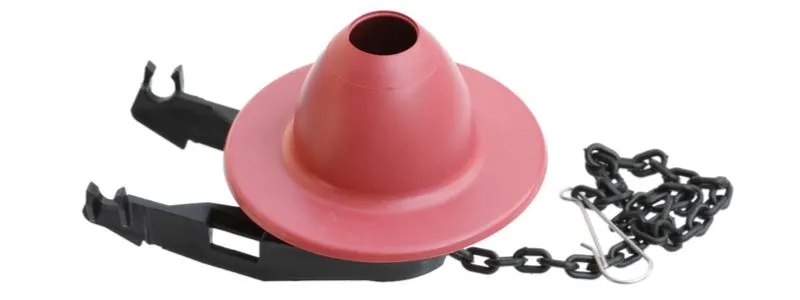
Winai Tepsuttinun/Shutterstock
While the tank is still empty, and after you’ve adjusted the flush chain as needed, examine the flapper.
If the rubber is visibly corroded or leaves rubber deposits on your fingers when you touch it, it needs to be replaced. Replacing the flapper is the best solution.
Flappers deteriorate over time and need to be replaced semi-regularly. Your calendar is your friend: mark your calendar at an appropriate interval to check (and potentially replace) the flapper.
In high-use toilets, you’ll want to examine the flapper at least once every six months.
In lower-use toilets (toilets in a rarely-occupied mother-in-law suite, for instance), you can examine the flapper once every twelve months.
While examining the flapper, check the valve seat—the opening where the flapper seals to the bottom of the tank—for debris, including mold or mineral buildup.
Spray or wipe the area with a bleach solution to ensure that the flapper is making a complete seal with the valve seat. Even a small amount of debris keeping the flapper from sealing to the seat completely can lead to a running toilet.
Step 4: Examine the Float Valve and Overflow Tube
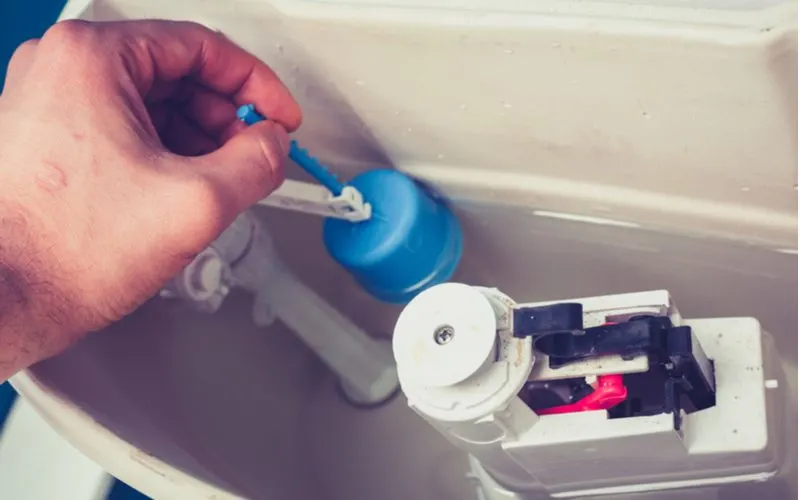
Lolostock/Shutterstock
If your chain is the right length, and your flapper and valve seat are working and clean, the float valve and overflow tube may be to blame if your toilet keeps running.
The float valve controls the amount of water that re-enters the tank after you flush the toilet.
Most float valves have an adjustable clip and rod mechanism that allows you to control the tank water level. If your toilet keeps running, the clip on the float valve rod may be too high, causing water to continue filling the tank, even if it’s full.
Push the clip downward on the rod to the appropriate water level. Different manufacturers recommend different tank water levels, but a good rule of thumb is to keep the water level at least one inch below the top of the overflow tube.
After adjusting the rod, turn the water supply to your toilet back on and try out a test flush. Adjust the clip until the toilet stops running after flushing, but don’t place the clip low enough to prevent a strong flush.
Things to Consider If Steps 1–4 Don’t Work
If the steps above didn’t fix a toilet that keeps running, consider some of the following frequent mistakes that amateur plumbers make:
Is your flapper (or replacement flapper) the correct size?
- If the existing flapper on your toilet is too large or too small to fully seal on the valve seat, the toilet will keep running, even if the valve is in good condition and the seat is clean.
- Measure the valve seat before replacing your flapper, and ask a hardware store associate to help you pick the correct size.
- If your valve is deteriorated and needs to be replaced, bring your existing flapper to the hardware store with you to ensure that you purchase a replacement of the correct size.
Is the tank water level correct for your specific toilet?
- Manufacturers recommend different tank water levels for different toilets. You can determine the appropriate water level for your tank by checking the Owner’s Manual for your toilet.
- Often, toilet manufacturers will mark the appropriate water level on the inside of the tank, so be on the lookout for this mark while adjusting the clip on your float valve’s rod.
Is the eyelet on your flapper in bad shape?
- If you’ve adjusted the chain length on your flapper, and this solves the running problem, you don’t want to be fiddling with your toilet tank parts anytime soon. While examining your flapper, make sure you test the strength of the eyelet.
- The eyelet is where the flush chain is attached to the flapper. If the rest of the flapper is in great shape, but the eyelet is deteriorating, you need to replace the flapper.
- While a simple chain length adjustment may fix the running problem, it’s ideal to replace the flapper before the eyelet is compromised rather than after.
Frequently Asked Questions
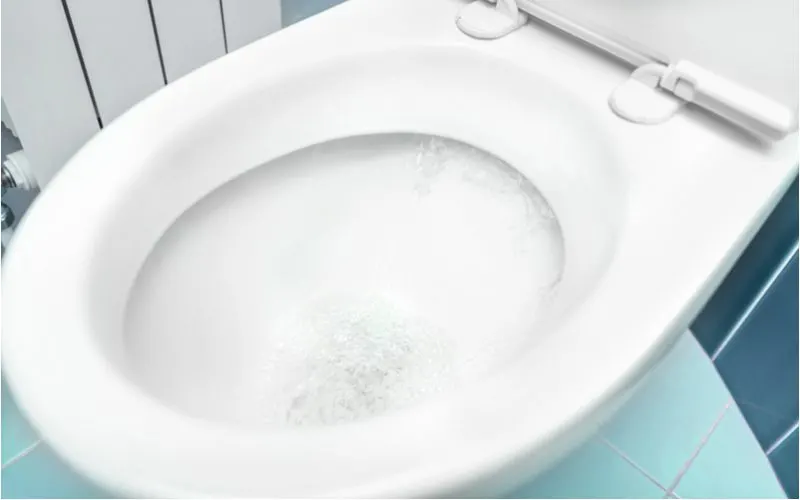
Rozhnovskaya Tanya/Shutterstock
What is the Most Common Cause of a Running Toilet?
A flapper that is deteriorated, is too big or too small, or has too short of a flush chain is the most common cause of a running toilet.
During the troubleshooting process, when a toilet keeps running, check the flapper first.
Is it a Bad Thing If My Toilet Keeps Running?
While a running toilet isn’t the most disastrous problem you can have, left unfixed, it can result in lots of wasted water.
If you care about the environment (and your utility bill), you should avoid water waste to contribute to natural resource conservation.
How Do I Fix a Dual Flush or Push Button Toilet that Keeps Running?
The troubleshooting process for dual flush or push button toilets is quite similar to the steps listed above for traditional flush mechanisms.
But, you’ll have to modify some of the troubleshooting processes for this specific type of flush equipment.
What Part(s) Do I Need to Fix a Running Toilet?
It’s hard to say which specific parts you’ll need to solve the problem when your toilet keeps running.
Instead of jumping the gun and buying replacement parts for your toilet before you start working on it, follow the steps above to determine if you’ll even need to take a trip to the hardware store.
When to Call a Pro
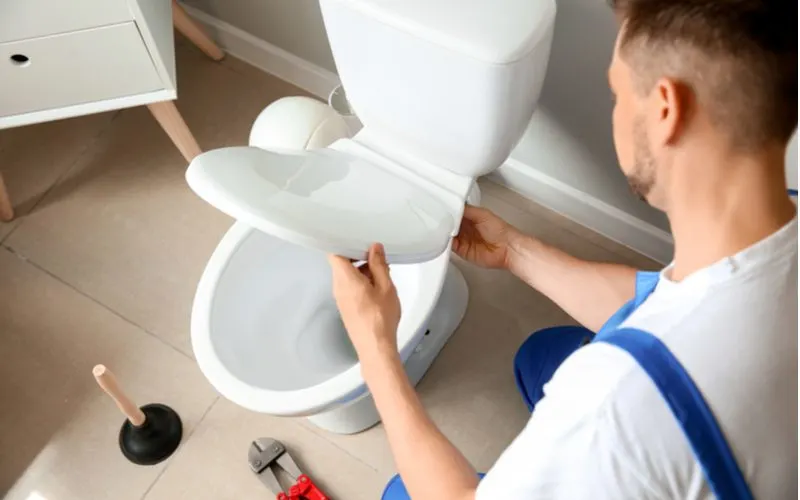
Pixel-Shot/Shutterstock
If you’ve tried all of the troubleshooting steps listed above and still can’t fix the problem, it’s time to consult the pros. Perhaps you’ll want to skip the troubleshooting phase altogether in favor of calling a professional.
This is likely the quickest solution to your problem since experienced plumbers will likely be able to identify and fix the problem more quickly than an amateur. You should also immediately defer to a professional if you’re a renter.
Any potential errors you make when attempting to fix your toilet will likely have to be repaired by a plumber at your expense, while an immediate call to a plumber will likely be paid for by your landlord.
Calling a professional is always the ideal option for handling plumbing issues.
Plumbers are licensed, insured, and are much more likely to identify and fix the problem than an amateur. They’re also much less likely to make a costly mistake.
We partnered with Networx to help you find local plumbers in your area. Click to below to get a FREE quote.
So, What Do You Do If Your Toilet Keeps Running?
While the steps above are very likely to offer an easy solution, there are certain precautions and considerations you should take when performing amateur plumbing.
Make sure that your tank equipment is correctly sized, and check for even low-level deterioration in your equipment. Consulting an owner’s manual is never a bad idea, either.
But, consulting a professional plumber is the most highly recommended option and will likely result in the quickest, longest-term fix if your toilet keeps running.

